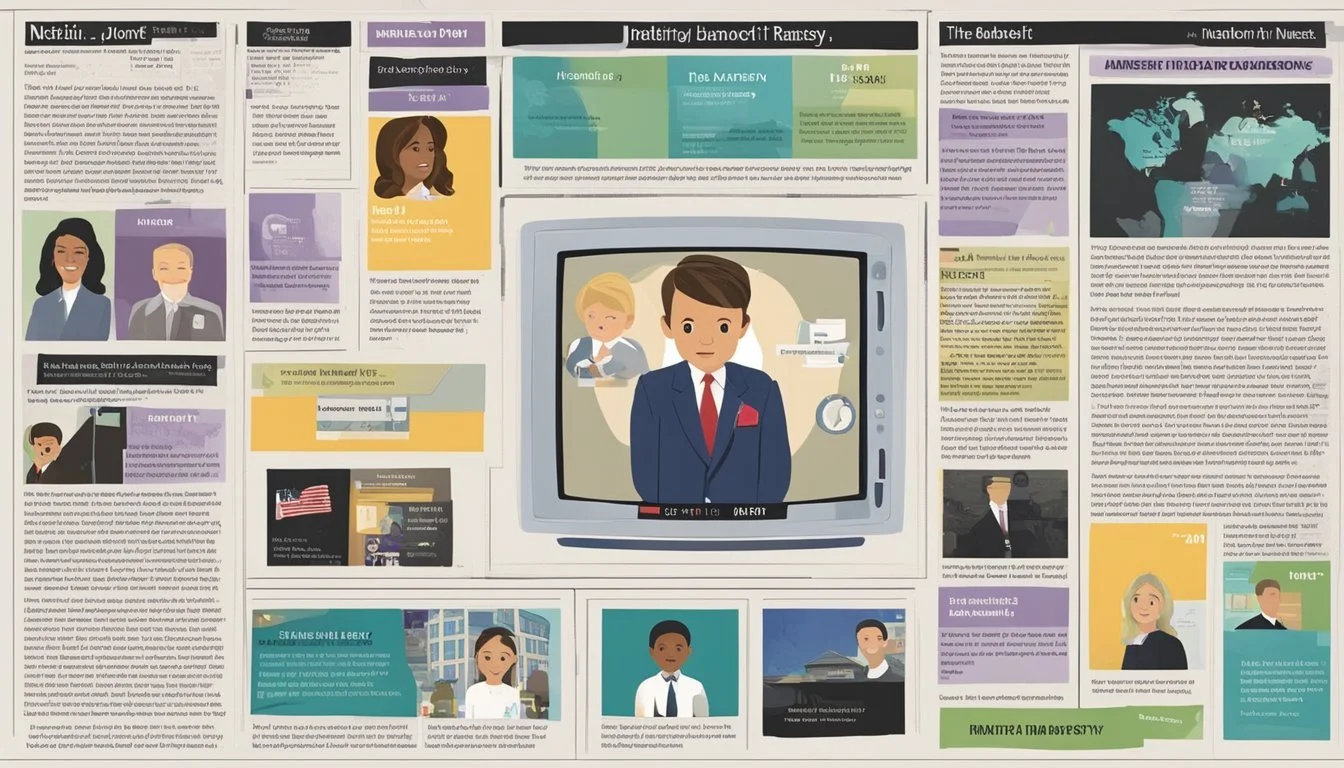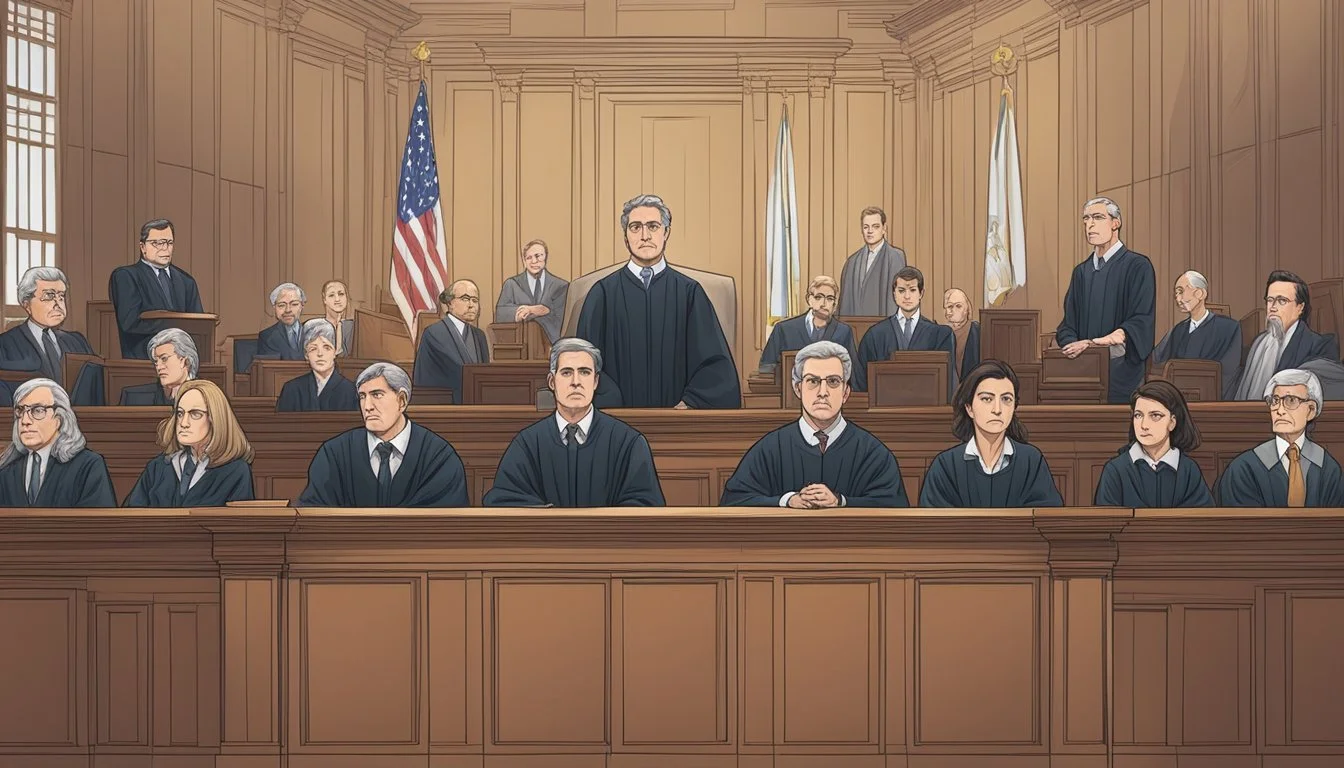JonBenét's Killer Exposed? Netflix Bombshell Unearths Shocking New Suspect, Family's Dark Secrets
Netflix's docuseries "Cold Case: Who Killed JonBenét Ramsey" examines the shocking 1996 murder of 6-year-old beauty pageant contestant JonBenét Ramsey. The three-part series, directed by Joe Berlinger, explores the decades-long investigation into this high-profile unsolved case that captivated the nation.
The documentary reexamines the evidence, media coverage, and law enforcement missteps that have hindered efforts to identify JonBenét's killer. It chronicles the intense public scrutiny faced by her parents, John and Patsy Ramsey, who were initially considered suspects. The series also delves into the challenges investigators encountered at the crime scene.
Released in November 2024, "Cold Case: Who Killed JonBenét Ramsey" aims to shed new light on the case and reignite interest in solving this enduring mystery. By presenting a comprehensive look at the investigation, the docuseries invites viewers to reassess their assumptions about this tragic and perplexing crime.
The Life And Tragic End Of JonBenét Ramsey
JonBenét Ramsey was a young beauty pageant contestant whose life was cut short in a shocking murder case that captivated the nation. Her story involves a seemingly idyllic family life, success in child beauty pageants, and a brutal crime that remains unsolved to this day.
JonBenét: Beauty Pageant Star
JonBenét Patricia Ramsey was born on August 6, 1990, in Atlanta, Georgia. She gained recognition as a talented child beauty pageant contestant, winning numerous titles at a young age. Her blonde hair, bright smile, and polished performances made her a standout in competitions across several states.
JonBenét participated in events such as America's Royale Miss and Little Miss Colorado. She showcased talents in singing and dancing, often wearing elaborate costumes and makeup. Her success in these pageants brought both admiration and criticism, as some questioned the appropriateness of such competitions for young children.
The Ramsey Family
John and Patsy Ramsey were JonBenét's parents. John was a successful businessman, while Patsy was a former beauty queen herself. The family, including JonBenét's older brother Burke, lived in a large home in Boulder, Colorado.
The Ramseys were known for their wealth and social status in the community. They hosted parties and were active in local events. Patsy was particularly involved in JonBenét's pageant career, often helping with costumes and preparations.
Their seemingly perfect life would be shattered by the events that unfolded in late 1996.
December 26, 1996: The Day of The Discovery
On the morning after Christmas, Patsy Ramsey called 911 to report that JonBenét was missing. She had found a ransom note demanding $118,000 for her daughter's safe return. Hours later, John Ramsey discovered JonBenét's body in the basement of their home.
The six-year-old had been strangled and suffered a skull fracture. The brutal nature of the crime shocked the community and the nation. Police initially focused on the family as suspects, a decision that would later be criticized for potentially compromising the investigation.
The case quickly became a media sensation, with intense scrutiny placed on the Ramsey family and the Boulder Police Department's handling of the investigation.
Key Elements in The Ramsey Case
The JonBenét Ramsey case involved several crucial elements that shaped the investigation. These include a mysterious ransom note, complex crime scene evidence, and ongoing DNA analysis efforts.
The Ransom Note
A lengthy ransom note found in the Ramsey home became a central piece of evidence. The 2.5-page handwritten letter demanded $118,000 for JonBenét's safe return.
Investigators noted several unusual aspects of the note:
It was written on paper from a pad found in the house
The amount requested matched John Ramsey's recent bonus
Handwriting analysis proved inconclusive
The note's content and circumstances raised questions about its authenticity and the perpetrator's familiarity with the family.
Crime Scene Analysis
The crime scene presented investigators with numerous challenges. JonBenét's body was discovered in the basement of the family home approximately 8 hours after she was reported missing.
Key findings included:
Signs of sexual assault
Ligature marks on her neck and wrists
A fractured skull
The location and condition of the body suggested the crime occurred inside the house. This fact, combined with no signs of forced entry, led investigators to initially focus on family members as potential suspects.
DNA Evidence
DNA analysis has played a significant role in the ongoing investigation. Multiple samples were collected from the crime scene and JonBenét's clothing.
Important DNA findings include:
Unidentified male DNA on JonBenét's underwear
Touch DNA on her long johns
These samples have been tested multiple times as DNA technology advanced. In 2008, the Ramsey family was officially cleared based on new DNA evidence. However, questions remain about the significance of the unidentified DNA and its potential to solve the case.
The Investigation Timeline
The JonBenét Ramsey case unfolded through several phases, involving multiple law enforcement agencies and external experts. Key developments occurred in the initial response, the Boulder Police Department's investigation, and the involvement of outside investigators.
Initial Law Enforcement Response
On December 26, 1996, Boulder police responded to the Ramsey home after Patsy Ramsey reported her daughter missing. Officers conducted a brief search but failed to secure the crime scene properly. This crucial misstep allowed potential evidence contamination.
At 1:05 PM, Detective Linda Arndt discovered JonBenét's body in the basement. The inadequate initial handling of the scene complicated future investigative efforts.
Boulder Police Department's Role
The Boulder Police Department led the investigation, facing intense scrutiny and criticism. They initially focused on the Ramsey family as primary suspects.
Detectives interviewed family members and collected physical evidence from the home. However, their lack of experience in high-profile murder cases became apparent.
The department's relationship with the District Attorney's office grew strained, hindering progress. Media pressure and leaks further complicated their efforts.
External Investigators
In 1997, Lou Smit, a veteran homicide detective, joined the investigation. He proposed an intruder theory, challenging the police's focus on the family.
The FBI provided support, assisting with evidence analysis and profiling. Their involvement brought additional resources and expertise to the case.
Private investigators hired by the Ramsey family conducted parallel inquiries. These efforts sometimes conflicted with official police work, creating tension.
In 1998, a grand jury was convened to review evidence. Despite meeting for over a year, no indictments were issued at that time.
Media's Impact On The Case
The JonBenét Ramsey case became a media sensation, profoundly influencing public perception and the investigation itself. Intense coverage shaped narratives, fueled speculation, and turned the tragedy into a national obsession.
The Media Circus and Scrutiny
News outlets descended on Boulder, Colorado, transforming the quiet town into a hotbed of journalistic activity. Reporters camped outside the Ramsey home, scrutinizing every detail of the family's life. Television networks aired countless specials, dissecting evidence and interviewing experts.
The case dominated headlines for months, with newspapers and magazines featuring JonBenét's pageant photos prominently. This constant exposure put immense pressure on investigators and the Ramsey family. Law enforcement faced criticism for their handling of the case, while the family endured relentless public scrutiny.
Media coverage often blurred the lines between fact and speculation, sometimes hindering the investigation. Leaked information and unverified claims circulated widely, potentially contaminating the public's understanding of the case.
Public Perception and Theories
The media's portrayal significantly influenced public opinion about the case. Initial sympathy for the family quickly gave way to suspicion as coverage focused on potential family involvement. This shift in perception led to widespread debate and armchair detective work among the public.
Conspiracy theories flourished in the media landscape. Some outlets promoted sensational claims, ranging from intruder theories to elaborate cover-up scenarios. These theories gained traction through repetition and exposure, regardless of their factual basis.
The case became a cultural touchstone, inspiring books, documentaries, and even fictionalized accounts. This ongoing attention kept the case in the public eye but also muddied the waters of factual information.
Social media's rise in recent years has reignited interest in the case, with new generations discovering and discussing the mystery online. This continued engagement demonstrates the lasting impact of the media's initial coverage on public perception of the JonBenét Ramsey case.
Key Personalities And Experts
The Netflix documentary "Cold Case: Who Killed JonBenét Ramsey" features interviews with crucial figures involved in the investigation. These individuals offer new insights and perspectives on the decades-old case.
The Ramsey Family Members
John Ramsey, JonBenét's father, plays a central role in the documentary. He provides firsthand accounts of the events surrounding his daughter's death and the subsequent investigation. John's candid interviews shed light on the family's experiences during and after the tragedy.
The late Patsy Ramsey, JonBenét's mother, is discussed extensively. Though she passed away in 2006, her involvement in the case remains a topic of interest. The documentary examines Patsy's actions and statements from the time of the incident.
JonBenét's older brother also contributes to the series, offering a unique family perspective rarely heard before.
Notable Detectives And Prosecutors
Lou Smit, a renowned detective who worked on the case, is prominently featured. His unconventional theories and dedication to the investigation are explored in depth. Smit's work challenged many initial assumptions about the crime.
Alex Hunter, the former Boulder County District Attorney, appears in the documentary. He discusses the challenges faced by the prosecution team and the controversial decision not to indict anyone for the murder.
The series also includes interviews with other law enforcement officials who were involved in the original investigation. Their insights provide a comprehensive look at the case from multiple angles.
Involvement of Armchair Detectives
The documentary acknowledges the role of armchair detectives in keeping the case alive. It examines how public interest and amateur sleuthing have influenced the investigation over the years.
Online communities dedicated to solving the case are highlighted. The series explores both the benefits and drawbacks of civilian involvement in such a high-profile crime.
Joe Berlinger, the director and producer, incorporates perspectives from these amateur detectives. He balances their theories with expert opinions, creating a nuanced portrayal of the ongoing investigation.
Legal Proceedings And Their Aftermath
The JonBenét Ramsey case saw complex legal developments unfold over the years. Key events included a grand jury indictment and ongoing efforts to pursue justice for the young victim.
The Grand Jury Indictment Controversy
In 1999, a grand jury voted to indict John and Patsy Ramsey for child abuse resulting in death. However, Boulder District Attorney Alex Hunter declined to sign the indictment, citing insufficient evidence. This decision remained secret until 2013 when a judge ordered the release of the indictment documents.
The revelation sparked debate about the handling of the case. Legal experts questioned Hunter's decision not to prosecute, given the grand jury's findings.
Efforts Towards Justice
Despite the lack of charges, the investigation continued. The Boulder Police Department faced criticism for mishandling evidence at the crime scene. This led to challenges in building a strong case against potential suspects.
In 2008, the District Attorney's office cleared the Ramsey family of involvement based on DNA evidence. However, questions about the reliability of this evidence later emerged.
Recent years have seen renewed interest in solving the case. Advanced DNA testing techniques and reexamination of evidence offer hope for breakthroughs. Law enforcement agencies continue to collaborate in pursuit of answers in this high-profile homicide investigation.
Exploring The Netflix Docuseries
Netflix's "Cold Case: Who Killed JonBenét Ramsey" offers a fresh look at the infamous murder case. The three-part series delves into new evidence and expert opinions, aiming to shed light on the decades-old mystery.
Netflix's Take on The Cold Case
The docuseries, directed by Joe Berlinger, presents a comprehensive examination of the JonBenét Ramsey case. It revisits key evidence and investigates potential leads that were previously overlooked.
Netflix's approach focuses on:
Reexamining forensic evidence
Analyzing police missteps
Exploring alternative theories
The series utilizes archival footage and reenactments to provide viewers with a detailed timeline of events. It also addresses the media frenzy that surrounded the case and its impact on the investigation.
Interviews And New Insights
"Cold Case: Who Killed JonBenét Ramsey" features interviews with:
Law enforcement officials
Forensic experts
Journalists who covered the case
These interviews offer new perspectives on the investigation. The docuseries also presents previously undisclosed information, potentially shedding new light on the crime.
Berlinger's approach aims to separate fact from speculation. He focuses on presenting verifiable evidence and expert analysis to guide viewers through the complex case.
Public Reception And Reviews
The Netflix docuseries has sparked renewed interest in the JonBenét Ramsey case. Critics have praised its thorough approach and commitment to factual presentation.
Viewers have responded positively to:
The series' objective stance
Its focus on evidence rather than sensationalism
The inclusion of new information and insights
Some reviewers note that while the series doesn't solve the case, it provides a comprehensive overview of the investigation. It challenges viewers to reconsider long-held assumptions about the crime.
The docuseries has reignited public discussions about the case, demonstrating the enduring interest in true crime stories on streaming platforms.
Ongoing Investigations And Public Fascination
The JonBenét Ramsey case continues to captivate public interest and spur new investigative efforts. Advanced forensic techniques and independent researchers contribute to the ongoing search for answers in this unsolved murder.
Recent Developments in DNA Testing
DNA technology has evolved significantly since 1996, offering new hope in the Ramsey case. Investigators have revisited evidence using cutting-edge genetic analysis methods. Touch DNA samples from JonBenét's clothing have been reexamined with more sensitive equipment.
Genetic genealogy, which helped solve the Golden State Killer case, is now being applied. This technique compares crime scene DNA to public genealogy databases. It aims to identify potential suspects through family connections.
The Boulder Police Department has partnered with genetic labs to explore these avenues. They hope to uncover new leads that could finally crack this cold case.
The Role of Independent Researchers
Amateur sleuths and armchair detectives have become a significant force in the Ramsey investigation. Online forums and social media groups dedicate countless hours to analyzing case details. These independent researchers often uncover overlooked information or propose new theories.
Some former law enforcement officials have also joined the investigation independently. They bring professional expertise to the public discourse surrounding the case. Their efforts have led to renewed media coverage and public pressure for answers.
Independent researchers have challenged official narratives and pushed for the release of more case files. Their persistent involvement keeps the case in the national spotlight, ensuring it remains a priority for law enforcement.
Cultural Impact And Legacy
The JonBenét Ramsey case captured America's attention, sparking a media frenzy and leaving an indelible mark on popular culture. Its influence extended far beyond the initial investigation, shaping public perceptions of child beauty pageants and true crime narratives.
The Case as a National Obsession
JonBenét Ramsey's murder became a national obsession, dominating headlines for years. The media scrutiny was intense, with 24-hour news coverage and speculation about the family's involvement. This case highlighted the public's fascination with unsolved crimes and celebrity-like figures.
The mystery surrounding JonBenét's death led to numerous documentaries, books, and TV specials. Each new development reignited public interest, keeping the case in the spotlight for decades.
Influence on Popular Culture
The JonBenét Ramsey case significantly impacted popular culture. It inspired numerous films, TV shows, and documentaries. Notable examples include the Netflix series "Casting JonBenét" and Paramount+'s "The Case Of: JonBenét Ramsey."
These productions often blurred the lines between fact and fiction, sparking debates about true crime entertainment ethics. The case also influenced discussions about child beauty pageants, leading to increased scrutiny of the industry.
The enduring mystery continues to captivate audiences, with new generations discovering the case through streaming platforms and social media.
Conclusion
The JonBenét Ramsey case remains one of America's most perplexing unsolved mysteries. Netflix's docuseries "Cold Case: Who Killed JonBenét Ramsey" offers a fresh examination of the evidence and key players involved.
Despite nearly three decades of investigation, no definitive answers have emerged. The series highlights the complexities and challenges faced by law enforcement in this high-profile cold case.
New interviews with John Ramsey and JonBenét's brother provide personal insights into the family's experiences. The documentary also explores previously undisclosed details and expert analyses.
While the series presents various theories, it ultimately underscores the ongoing pursuit of justice for JonBenét. The true crime genre continues to captivate audiences, keeping cold cases like this in the public eye.
As technology advances and new investigative techniques emerge, hope remains that the truth behind JonBenét's tragic death may one day come to light. Until then, her case serves as a stark reminder of the complexities inherent in solving long-standing criminal mysteries.






